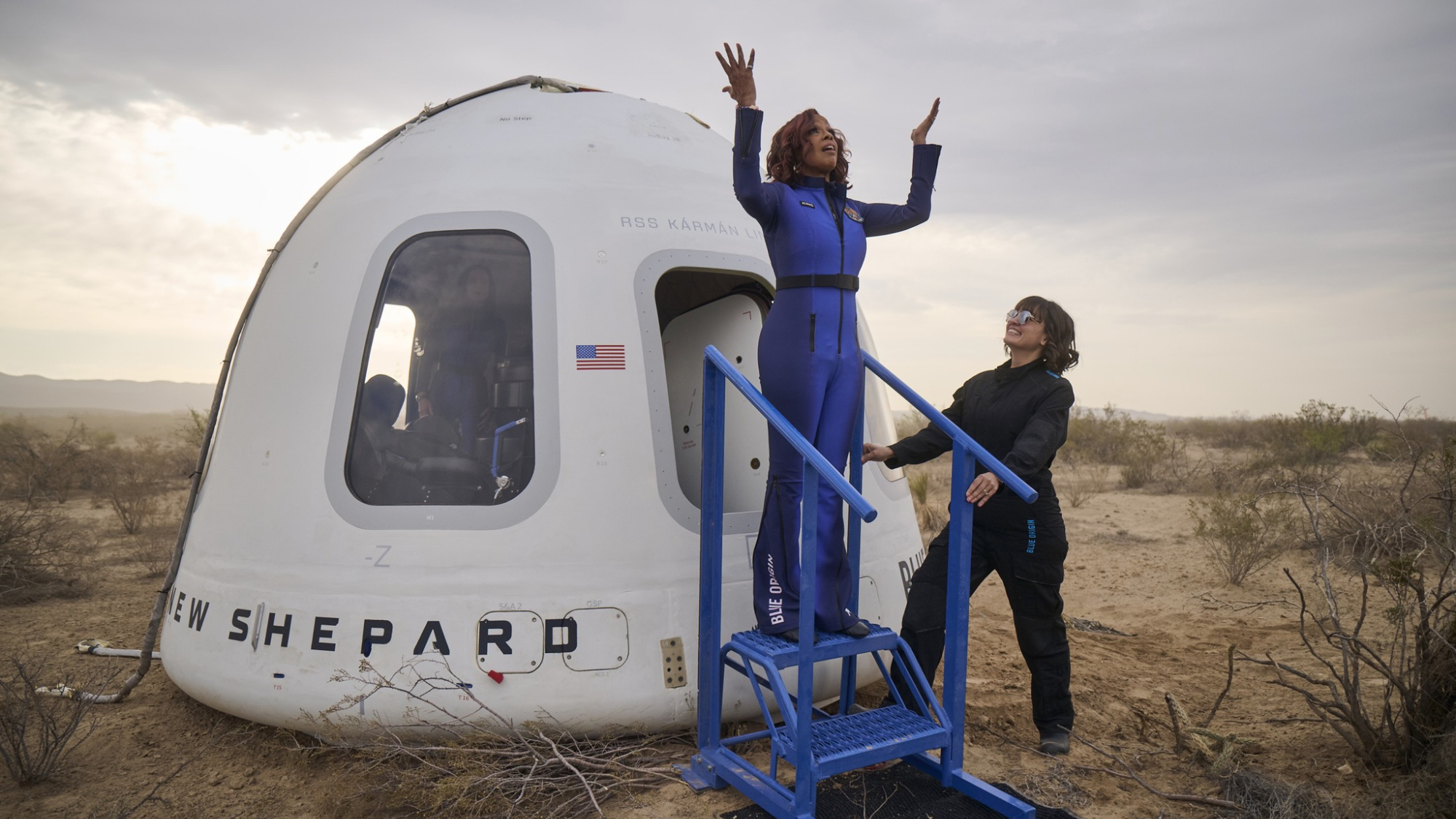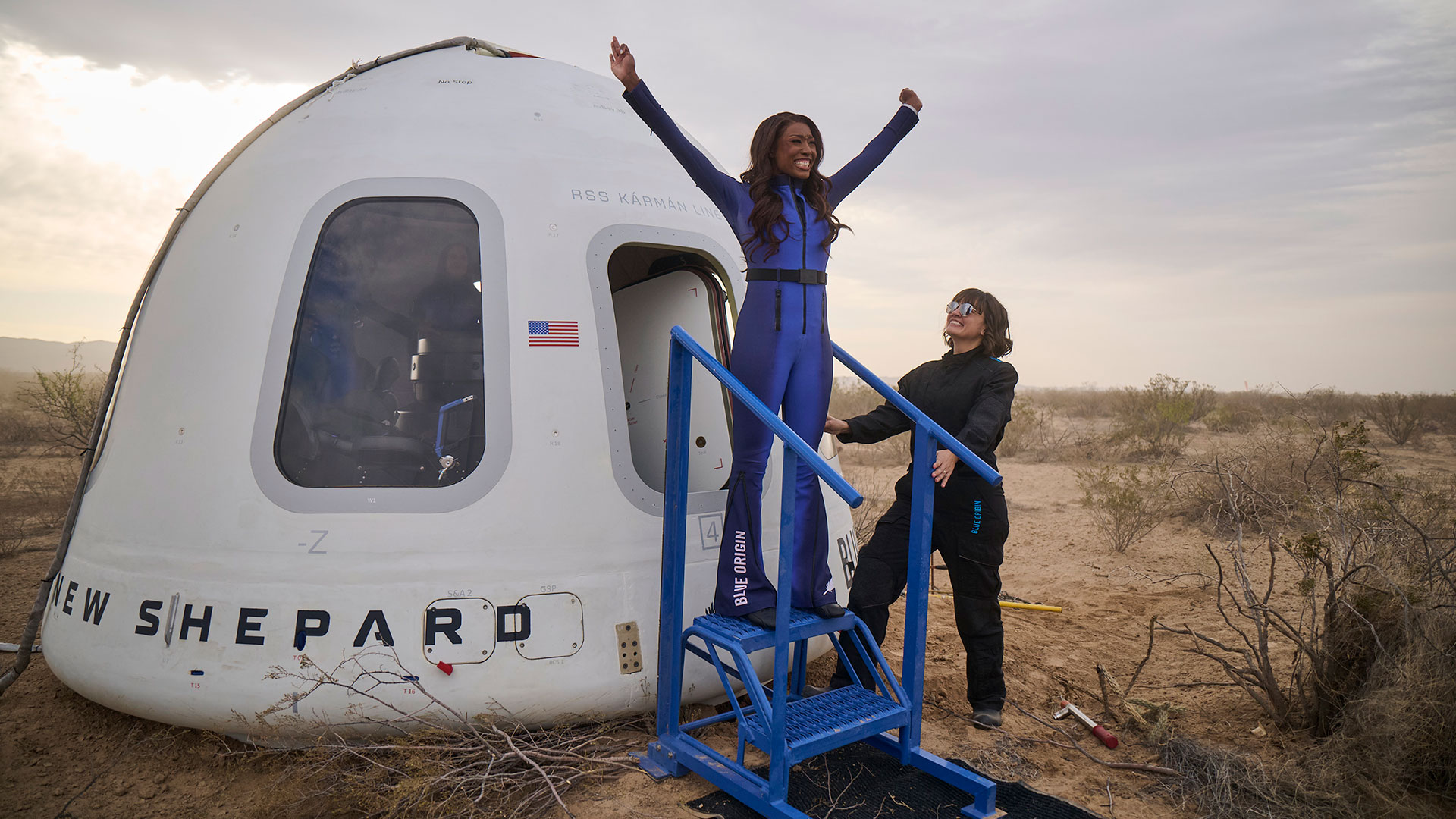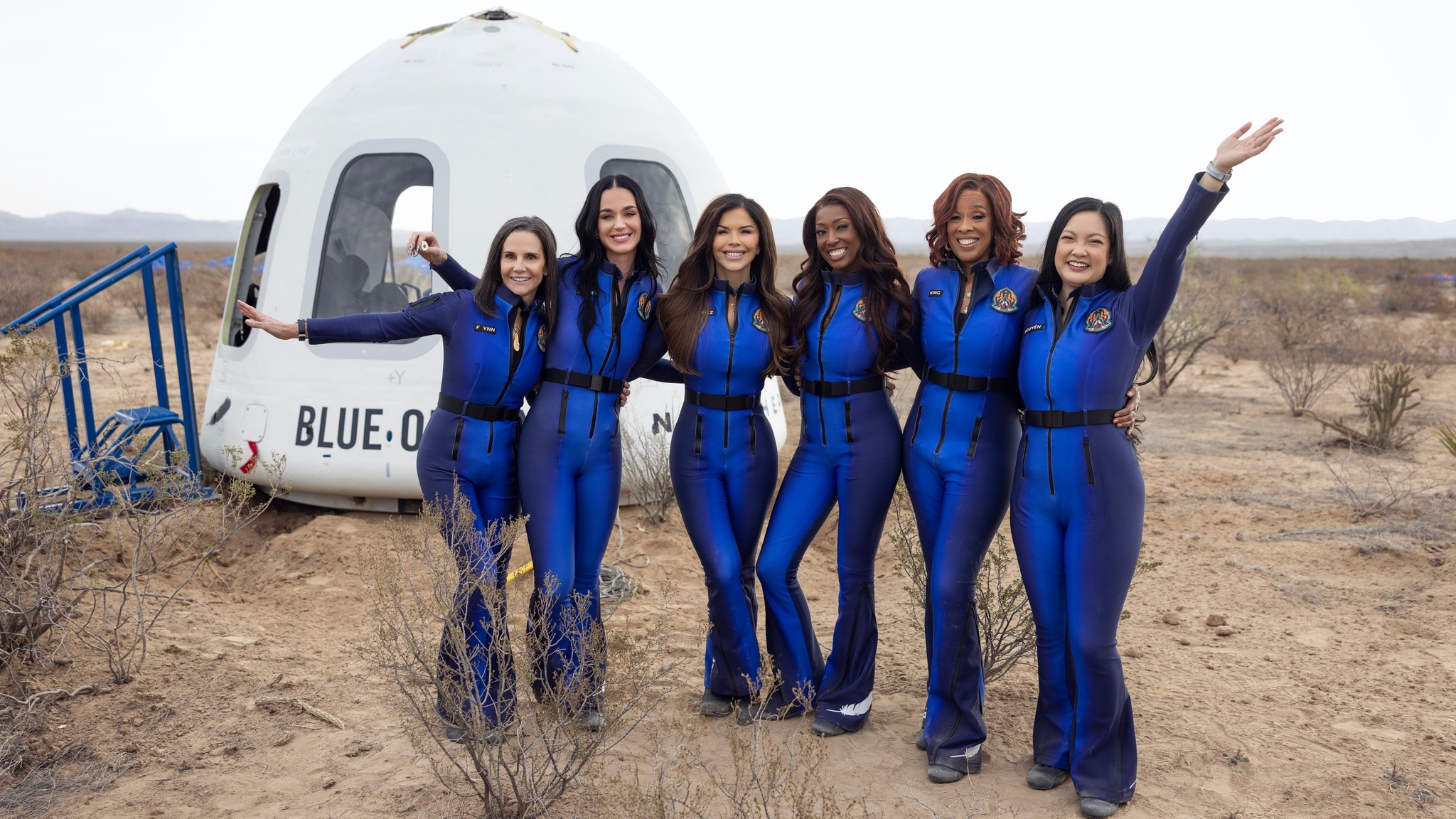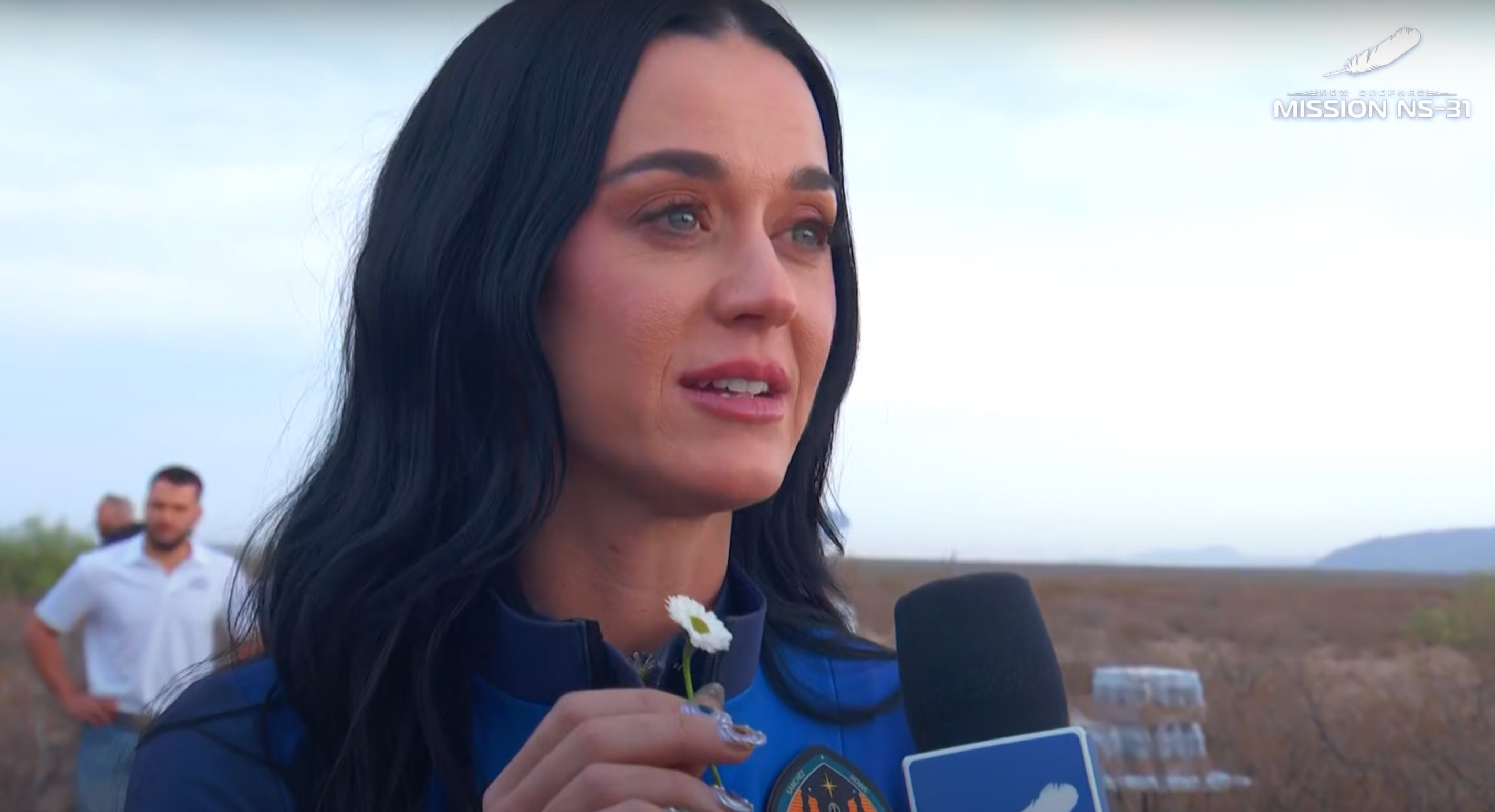Space Shuttle Discovery Lands Safely in Florida
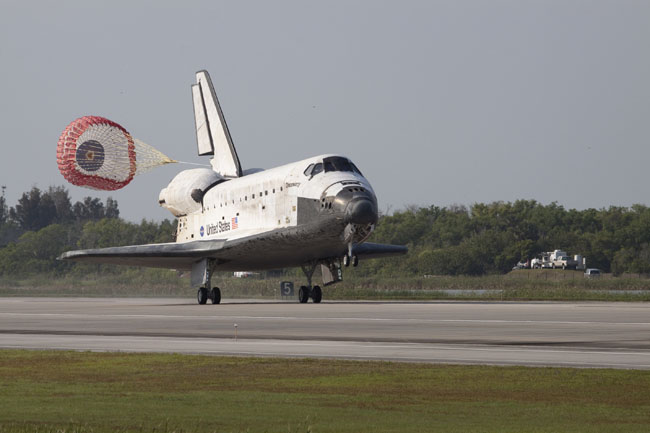
Thisstory was updated at 9:15 a.m. ET.
CAPECANAVERAL, Fla. ? Space shuttle Discovery landed safely in Florida on Tuesdaymorning to wrap up a 15-day delivery mission to the International Space Station(ISS), one of NASA's few remaining shuttle flights before the orbiter fleetretires later this year.
Shuttlecommander Alan Poindexter guided Discovery to a 9:08 a.m. EDT (1308 GMT)touchdown at the Shuttle Landing Facility at NASA?s Kennedy Space Center,following a flight path that took the shuttle over much of North America beforeavoiding rain showers falling over most of central Florida. Twin sonicbooms broke through the morning sky to announce the shuttle's homecoming aftera 6 million-mile trip.
"Welcomehome!" Mission Control radioed Poindexter and his crew. "Congratulationsto you and your crew on an outstanding mission."
Ridinghome with Poindexter were STS-131 pilot James Dutton and mission specialistsDorothy "Dottie" Metcalf-Lindenburger, Stephanie Wilson, RickMastracchio, Clayton Anderson and Japanese astronaut Naoko Yamazaki. With justthree flights remaining scheduled for NASA?s 30-year space shuttle program,the astronauts on Discovery's mission were the lastseven-member crew to fly.
"Itwas a great mission," Poindexter told Mission Control. "The InternationalSpace Station is stocked up again."
Returningto Earth inside Discovery?s payload bay was the Leonardo Multi-PurposeLogistics Module (MPLM), a cargo module that launched on the shuttle on April 5with nearly 8 tons of supplies for the station, including a new crew sleepingquarters, ammonia coolant tank and four experiment racks. Leonardo landedpacked with almost 3 tons of science results and trash.
Get the Space.com Newsletter
Breaking space news, the latest updates on rocket launches, skywatching events and more!
Thiswas the final round-trip for Leonardo to the station after six previousflights. It?s next mission, STS-133 targeted to launch on Discovery in September, thelast planned for the shuttle program, will see its permanent installationon the ISS as a closet and storage space for the crew.
Discoverylanded a day late due to rain, though its return to Earth was not affected atall by the vast ash cloud from Iceland's Eyjafjallaj?kull volcano.
Theshuttle's re-entry over North America offered a special treat to skywatchers onEarth, who may have had a chance to spot the bright meteor-like streak ofDiscovery's plasma trail as it flew from the northwest coast of the Canada andUnited States to the southeast for its Florida landing. The last time a shuttlemade such an approach was in 2007.
NASAtypically tries to have space shuttles re-enter from the southwest ? anapproach that is mostly over the southern Pacific Ocean, parts of CentralAmerica and the Gulf of Mexico ? to avoid flying over populated areas since thetragic loss of the shuttle Columbia, which broke apart over Texas duringre-entry.
Malfunctionsand sticky bolts
Discovery?sSTS-131 mission left the space station 98 percent complete after 10 days dockedtogether, but was not without its share of minor snags.
?Imust say, I'm very proud of the teams on how well they handled and responded toall the adversities we've been faced with,? said lead space shuttle flightdirector Richard Jones.
Justafter Discovery's launch, the astronauts andflight controllers discovered that the shuttle's Ku-Band communicationsantenna, used to provide radar data during the shuttle?s approach andseparation from the station as well as transmit high bandwidth data ? such aslive video ? during the mission, had failed.
Althoughthe crew was trained to compensate for the loss of the system, it resulted in amission extension to allow time fortheir standard final inspection of the orbiter?s heat shield to be conductedbefore Discovery undocked from the station.
Themission almost gained yet another extra day as mission managers debated havingthe shuttle astronauts make an unplanned spacewalk after they had alreadycompleted the mission?s three planned outings to replace a 1,800-pound ammoniacoolant tank.
Thoughtheir work was hampered several times by sticky bolts preventing the removaland installation of the tank assemblies, it was a stuck valve on a nitrogentank that fed into the replacement ammonia assembly that gave flightcontrollers reason for concern.
Atfirst considered a more pressing a problem that threatened to shut down half ofthe station?s systems, Mission Control ultimately decided to continuetroubleshooting from the ground.
?Weexpect to always hit some unexpected difficulties, like we did on our flightwith the ammonia tank bolts, but the crew is really well-trained and we haveoutstanding engineering and operational support on the ground,? said Poindexterfrom orbit on Sunday.
Bycontrast, the work inside the station to move and install equipment deliveredby the shuttle proceeded smoothly. Led by the mission?s ?loadmaster? ? or cargochief ? Yamazaki, the crew installed a refrigerator-size rack designed toaugment the U.S. Destiny laboratory?s science-quality window with multipleman-tended and remotely-controlled camera mounts, as well as a novel devicedesigned to create water for the station's crew using waste hydrogen and carbondioxide gases.
Firstsand lasts
Discovery'sSTS-131 spaceflight was the 33rd shuttle mission to the International SpaceStation. It also marked Discovery?s 38th and next-to-last spaceflight.
Theastronauts set several records during their time aboard the orbitinglaboratory.
Togetherwith station crew member Tracy Caldwell, STS-131 mission specialists StephanieWilson, Dorothy Metcalf-Lindenburger and Naoko Yamazaki represented the most women in space at the same time.
Similarly,Yamazaki and fellow Japan Aerospace Exploration Agency (JAXA) astronaut SoichiNoguchi, a station flight engineer, set the record for the most Japanese inspace at one time.
Discoveryalso became the last orbiter expected to be in space over the anniversary ofthe first shuttle flight, STS-1.
Withjust three shuttle missions remaining, the next launch is scheduled forAtlantis in May.
Bycoincidence, Atlantis is due to roll out to its seaside launch pad at theKennedy Space Center tonight. That launch pad trek ? the last planned one forAtlantis ? was also delayed a day because of bad weather.
- Images ? Shuttle Discovery's Mission in Pictures
- Morning Star: The Pre-dawn Launch of Shuttle Discovery
- Iceland Volcano's Ash Cloud No Threat to Space Shuttle Landing
SPACE.comis providing complete coverage of Discovery's STS-131 mission to theInternational Space Station with Managing Editor Tariq Malik and Staff WriterClara Moskowitz based in New York. Click here for shuttle missionupdates and a link to NASA TV.
Join our Space Forums to keep talking space on the latest missions, night sky and more! And if you have a news tip, correction or comment, let us know at: community@space.com.

Robert Pearlman is a space historian, journalist and the founder and editor of collectSPACE.com, a daily news publication and community devoted to space history with a particular focus on how and where space exploration intersects with pop culture. Pearlman is also a contributing writer for Space.com and co-author of "Space Stations: The Art, Science, and Reality of Working in Space” published by Smithsonian Books in 2018.In 2009, he was inducted into the U.S. Space Camp Hall of Fame in Huntsville, Alabama. In 2021, he was honored by the American Astronautical Society with the Ordway Award for Sustained Excellence in Spaceflight History. In 2023, the National Space Club Florida Committee recognized Pearlman with the Kolcum News and Communications Award for excellence in telling the space story along the Space Coast and throughout the world.
